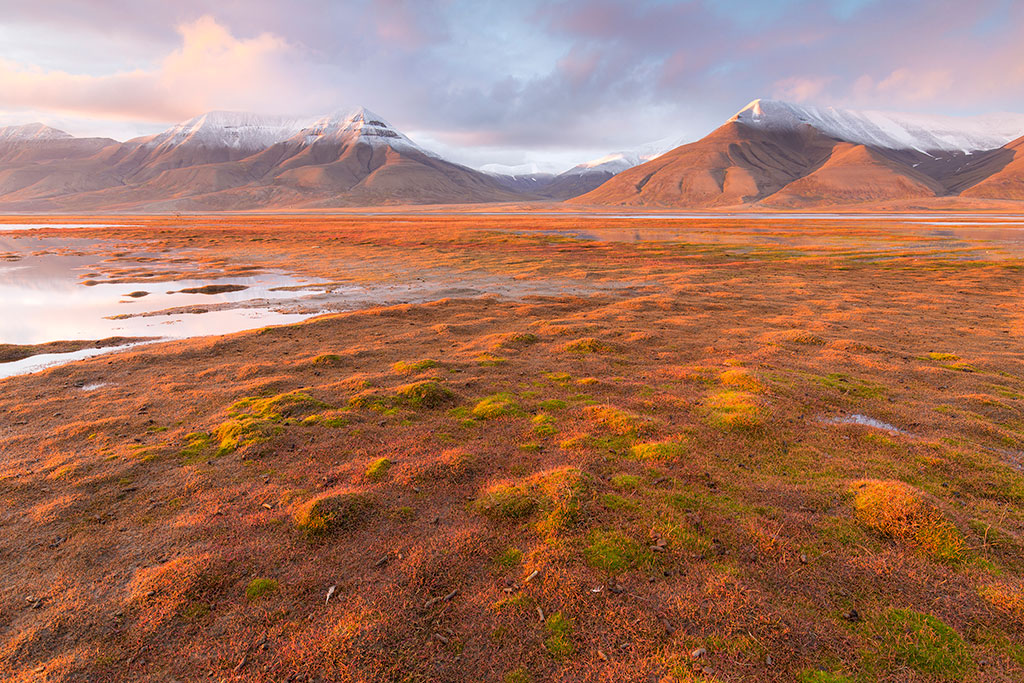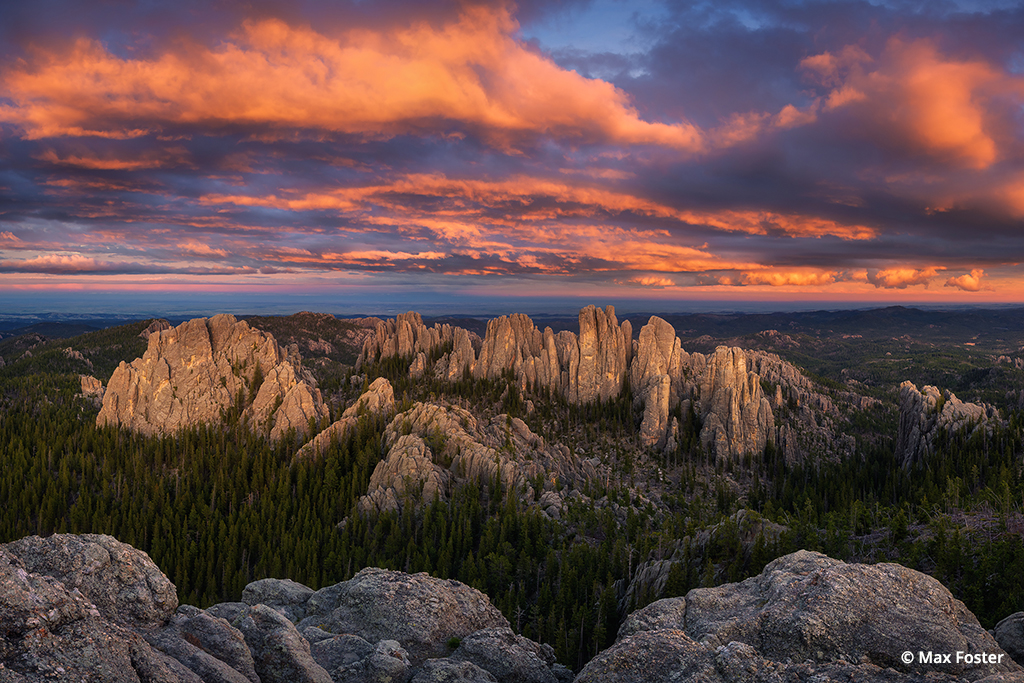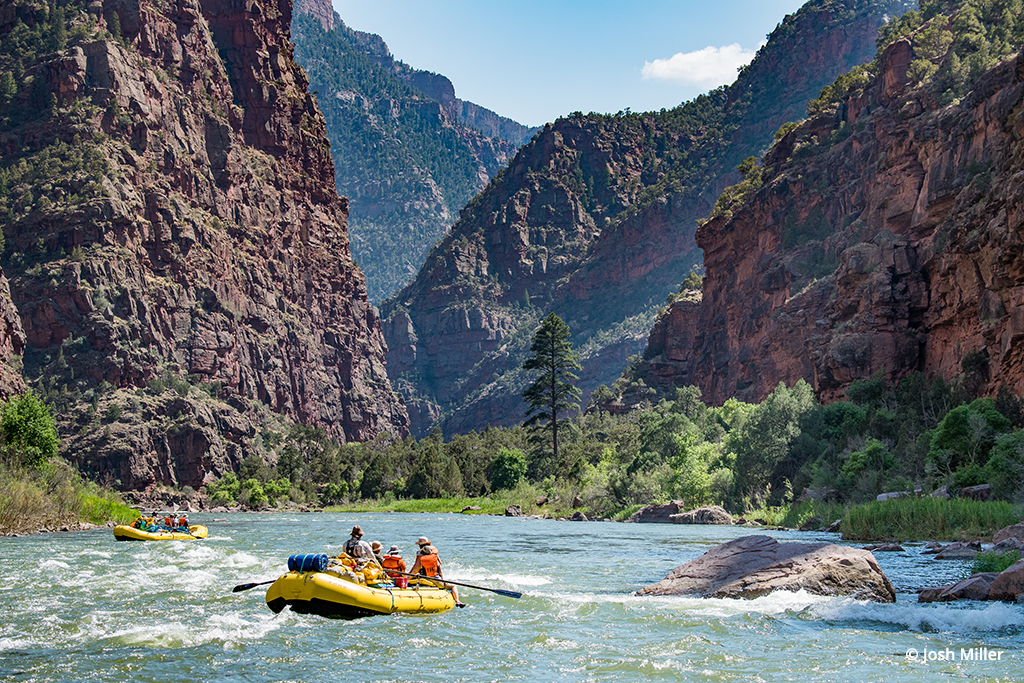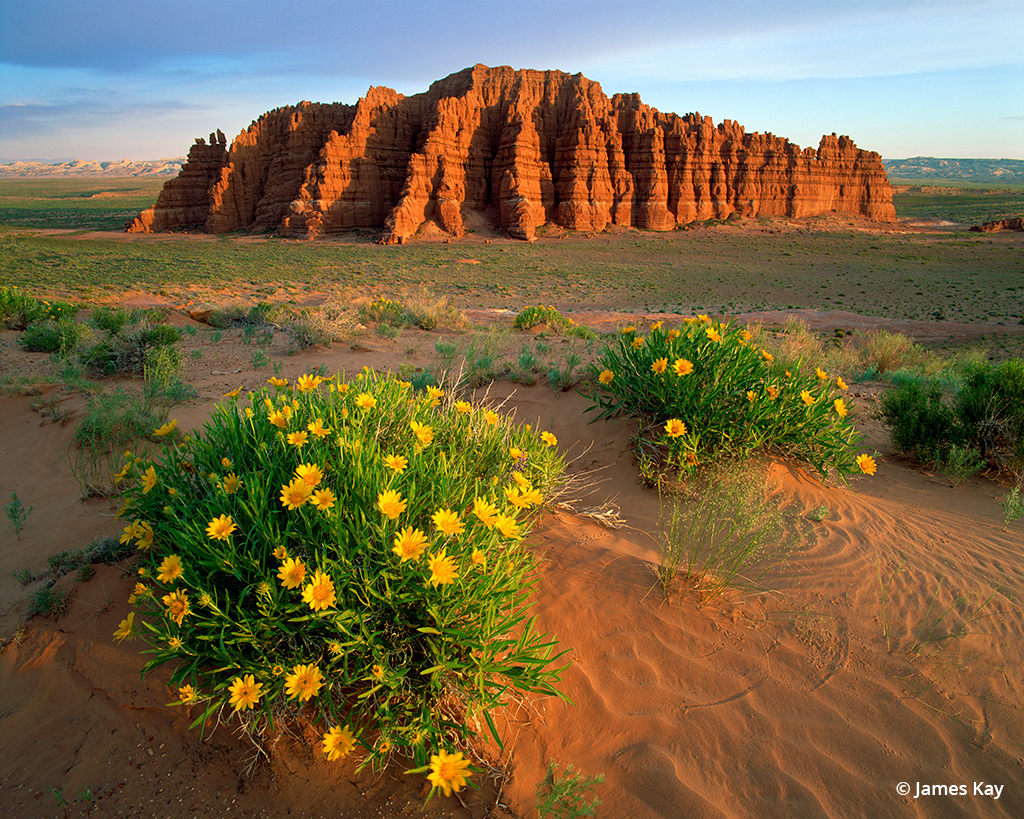Advertisement
Advertisement
Read Next

Why You Should Visit Svalbard In Norway For Photography
Svalbard in Norway features untouched...
The Needles
The Black Hills of South Dakota cover...
Dinosaur Adventure!
After feeling trapped at home for the...
Wildlands Of Utah
Look outside Utah's national parks to...Advertisement


Ends Of The Earth
You can see the depth of Paul Nicklen’s commitment to the environment and its inhabitants above and below sea level in his every frame.
Fractured. A large but skinny polar bear navigates a fractured seascape in search of seals. Franz Josef Land, Russia.
The National Geographic photographer, filmmaker, marine biologist and conservationist’s latest book, Born To Ice, brings the top and bottom of the globe to living rooms and libraries around the world. One can almost feel the bone-chilling efforts that the Vancouver Island-based Nicklen goes to in recording these magnificent yet unforgiving polar regions. His childhood experiences and field of study give him the ability to dive deeper—literally and figuratively—into his subjects.
Outdoor Photographer: How did you evolve from a marine biologist into a conservation-focused photographer?
Paul Nicklen: As a wildlife biologist with the government in the Northwest Territories in Yellowknife, I was doing very left-brained research. But all my life, I’ve seen the world in shapes and colors. I very much live in my right brain. That’s how I love to see nature. I was working on lynx, caribou and polar bears in the last year of my job. It was driving me crazy seeing the beauty—a mother polar bear and her three cubs on sea ice, and she’s teaching them how to hunt seals—then just turning that into a data sheet. It essentially cost me my job because I refused to put my camera down and it started to drive my colleagues nuts. In 1994, they forced me to make a decision. I asked for a leave of absence, time off to go find myself. They said, “No.” So I resigned that day. I left my job very disgruntled.
OP: And nature and the photography world are the beneficiaries. How did you go about finding a path forward?
PN: I went out on a three-month solo expedition in the Canadian Barren Lands a couple of weeks after quitting. I was 26. I had a plane drop me off. I was living on the tundra with wolves and bears, not seeing another person for three months. I had an inflatable canoe, 600 pounds of gear, and paddled hundreds of kilometers on rivers and into the open ocean and hiked a thousand kilometers. I got dropped off in the spring on the ice and snow, waited for the river ice to break up, and pumped up my boat. I had a rope going down white water rapids alone towing a bunch of Pelican cases behind me. I lost 50 pounds of weight. I went into the expedition mad at the world, mad at the government. I remember standing on the tundra and just yelling my lungs out until they were raw. By the end of it, I was absolutely on top of the world, euphoric, full of nothing but love, hope, passion and commitment to moving forward. Then I began a six-year journey of being flat broke, not selling a picture for the first couple of years. But I wouldn’t trade any of that for anything. It’s been a beautiful journey.
OP: What was the turning point? What “clicked,” so to speak?
PN: I did a bunch of goal setting on that expedition. After leaving my job, I was at a real low point in my life. I was sitting on the couch at one in the morning watching television with a five-pound bucket of gummy bears, overweight, miserable and depressed. Anthony Robbins came on TV, and I thought, “This is kind of interesting,” and then mentioned it to my wife at the time. When I was walking out the door for the solo expedition, as a joke she threw a copy of his book, Awaken The Giant Within, into my bag. I wasn’t planning on reading anything, but I had nothing else to read. The book was full of little goal setting tasks, and I started to do them. The turning point was getting rid of all these demons, then goal setting and realizing a very exciting path forward.
Vertical Feast. A humpback whale lunges skyward as herring pour out of its mouth. Lofoten, Norway.
One of the main goals was to end up as a journalist for National Geographic. That became a six-year journey. I ended up getting mentored by Flip Nicklin, the great whale photographer, and Joel Sartore. They taught me how to tell a story with a camera. That’s the one element I was missing at the beginning. The one skill I’m better at than most people is freezing and being miserable. Being able to be immersed in cold water for long periods of time and being able to shoot world-class art is what ultimately got me into National Geographic.
OP: Did you have to make adjustments to your approach to photography to shoot for the esteemed magazine?
PN: I fell in love with fine art photography when I was in my twenties. National Geographic doesn’t want to breed the fine artist out of you, but they want you to be a hardcore journalist. It’s “What’s in front of your camera? Record the moment.” as opposed to “What’s your artistic expression?” Also, the bar is set at the highest level. You can’t come back from these expeditions, “Look, the scientist didn’t give me access. The boat broke down. The whales didn’t show up.” You’ll be met with, “That’s too bad, but we publish pictures, not excuses.” I think it was Bob Gilka, the famous former director of photography at Nat Geo, that came up with that line and passed it on to other editors.
OP: You are coming back from assignments in some of the most extreme climatic conditions on the planet. What are you wearing to minimize your exposure to the elements in the waters of the polar regions?
PN: Any time you’re in water temperatures below 45 degrees Fahrenheit, you want to be in a dry suit. A number of years ago, diving apparel wasn’t very good compared to what it is now. It didn’t fit very well. Even now in a dry suit with a neoprene hood, your head gets wet. I used to get headaches so bad that I would puke. Nowadays, I work with a company called Waterproof in Sweden, which custom makes everything for me. Wearing their suits, I can double my time underwater and not have those headaches.
OP: What’s the max time you can stay underwater in the Arctic regions?
PN: Even with the best gear, within five or six minutes you start to lose feeling in your face and lips. This is in water in the Antarctic that is 28 degrees Fahrenheit. It’s as cold as salt water can get before it freezes. After 10 to 15 minutes, you start to lose feeling in your hands and fingers. After about 20 to 25 minutes, your whole body starts to feel extremely cold. After half an hour, you lose all feeling in your extremities, and after 40 to 45 minutes, you start to shiver violently. After about 50 minutes to one hour, the shivering stops and you’re entering the early stages of hypothermia. When I come up after that much time in the water, I’m pretty messed up for a couple of hours.
Polar Plunge. A brave Adélie penguin throws caution to the wind and leaps in the cold Antarctic Sea. Antarctica.
OP: Just looking at shots of you at work in the icy waters of the polar regions makes most people feel cold.
PN: In 2006, I was in the water for an hour and a half trying to photograph emperor penguins. A female leopard seal was there trying to feed me. That kept the adrenalin pumping. She was attempting to care for me by bringing me live, then dead, penguins figuring that I was a useless predator that was probably going to starve to death. I was with an animal that is as big as a grizzly bear, and I’m looking inside its throat. I’m thinking, “ƒ/8 and half-power strobes. Where’s my focus? What’s my hyperfocal distance?” Trying to think of all that while a top predator in the ocean attempts to feed you is pretty intense.
OP: And now you’re sharing these behind-the-scenes stories through Instagram. You’re heading toward the incredible number of 5 million followers.
PN: I got into it less than five years ago. Before then, I thought, “What’s the point?” One day I did a post on National Geographic and wrote, “Here are some narwhals crossing tusks, but if you want to see the most powerful moment of diving with them, visit my Instagram.” I think I picked up 45,000 new followers within two hours. That’s when I realized there was a hunger for people to connect to this world. And then as Cristina Mittermeier and I formed our nonprofit, SeaLegacy, where our goal is to use the power of visual storytelling to connect the world to our oceans and to create real change, Instagram became a powerful tool. It’s real people looking for guidance, for something to believe in, for hope.
OP: Are you seeing climate change in equal measure in the Arctic and Antarctic?
PN: There are massive indicators that both places are under threat. Let’s go to the Arctic first. Even when I was a biologist in 1994, we took our snowmobiles on a trip from Resolute all the way to the northern end of Ellesmere Island. We were trying to cross over to Greenland to study polar bears and see the Inuit from Qaanaaq. An ice bridge had been used there for thousands of years by the Inuit to go back and forth. Greenland has an incredibly rich habitat. We couldn’t quite make it. The ice wasn’t quite right. These were the last years when the Inuit could make the crossing. It’s now open water.
You think of the Franklin Expedition about 170 years ago getting crushed in the sea ice. Now, 2,000-passenger cruise ships are sailing through the Northwest Passage. I grew up with multiyear ice on Baffin Island. There was ice everywhere all summer long. There were bearded seals, ring seals, ivory gulls, walrus, polar bears—this whole lifecycle that depends on this multiyear ice. In the next 10 to 15 years, it will be completely gone. I went to photograph polar bears in Svalbard, Norway, a few years ago and had to put the assignment on hold. Not only was there not ice in the summertime, but they’re having a hard time finding sea ice in the wintertime. This is a place that was historically surrounded by ice year-round and had a thriving polar bear population. Three days after I worked with a friend in Norway, he fell through the ice on a snowmobile and died. So I’ve lost friends to thin ice and rotten ice.
Arctic Journey. With the ice gone, walrus seek out beaches to raise their young. Here, they’re more susceptible to polar bear predation. Svalbard, Norway.
.
As for the Antarctic, the Larsen B Ice Shelf is now completely gone, and other ice shelves are following suit. Some people say, “But there’s a lot of annual sea ice.” That’s because there’s so much melt off and fresh water has a different freezing point than salt water. And you look at the glaciers no matter where you go, every glacier is receding dramatically, especially in the last few years.
OP: And it’s not just cyclical?
PN: People like to go to the natural cycle argument, but when you look at cycles through time, you just overlay the presence of humans and the Industrial Revolution and correlate that with graphs. I was a B-level scientist, but as a journalist I have access to the best scientists in the world. I can go to anybody at NASA and say, “Tell me what’s going on.” In 2002, I was on a big climate change story for National Geographic going through the Northwest Passage on the CCGS Louis S. St-Laurent, Canada’s biggest icebreaker, and every scientist I tried to interview on board would not go on record and say, “This is due to climate change.” I can go to any of those scientists now and it’s non-negotiable.
OP: Can this course be reversed?
PN: We have to minimize our carbon footprint. We have to stop cutting down forests. We have to get off fossil fuels. We have to switch to clean energy. And we have to learn to make clean energy profitable for people. You go to places like Florida where solar is now the cheapest form of energy. It’s cheaper than nuclear, way cheaper than oil. We are heading in the right direction, it’s just not fast enough. Justin Trudeau, who came in [as Prime Minister of Canada] on an environmental platform, is now doubling down on Canada’s tar sands, which is some of the dirtiest oil on the planet. They are going to take that oil and put it in tankers and increase tanker traffic out of Vancouver seven-fold. The tankers are going to go over to Asia, where they are going to process it and ship it back so we can use it. We need to make clean energy profitable.
OP: You grew up with the Inuits, who are now on the front line of the climate change battle. How did those years influence your work today?
PN: In 1972, my family moved from Saskatchewan to Iqaluit, which was then called Frobisher Bay, on Baffin Island. It had a population of 3,000. My dad had gotten a really good job there and went from working deep in the potash mines of Saskatchewan to becoming the superintendent of the Department of Public Works running the equipment for the town, the generators. He was a diesel mechanic, and my mother was a schoolteacher. We lived there for a couple of years, then, much to my delight, we moved to Kimmirut—then it was called Lake Harbour—where we were one of four non-Inuit families. The population of the town was around 200 people. We had no telephone, no television, no radio. The only thing we had to read was a whole collection of Jacques Cousteau books. For entertainment, I would go outside and play or be on the land hunting, fishing or traveling.
Narwhal gather en masse at the Arctic Bay floe edge to eat cod in the spring. Photo’s taken in early July.
My mom picked up photography and had her own darkroom, and I got to see the magic of these moments reveal themselves in front of my eyes. I was enamored with the process, turning a white piece of paper into a black-and-white print of an Inuit hunter on the ice with his kill or whatever it was. My mom eventually gave me her Pentax K1000, and I started walking around thinking I was the king of the world. Right away, my pictures started coming out way different than I had anticipated. That’s when I fell in love with the artistic side of photography, creating art as opposed to just recording a moment.
I was learning how to be tough, survive, learning how to freeze, what it meant to be really cold, learning how to read weather and conditions and developing the right side of my brain since the Inuit are very much into visual storytelling. I learned some of the Inuktitut language. The Inuit kids would always tell ghost stories in Inuktitut in the evening and talk about soapstone carvings and the stories behind them. It’s a beautiful culture.
In 1981, we moved to Yellowknife, which was another 17 years in the Canadian north. That’s where I worked as a biologist and spent 15 years after that living in the Yukon, flying my little ultralight airplane through the mountains photographing and working for National Geographic.
OP: What was your major in school?
PN: It was a four-year biology degree with an emphasis on marine biology at the University of Victoria. During my second year, I saw a poster for a diving class. I thought, “Are you kidding me? Could I really learn to dive?” It was life changing. When you come from the North, you think, “This is my life, this is what I have to accept. Nothing like this is available to me.” And all of a sudden, I’m in diving classes and we’re diving off the coast of British Columbia and seeing all these animals that I was so intrigued by as a kid. Right away, I started to photograph underwater. Even my professor, Dr. Arthur Fontaine, a world authority on invertebrate zoology, is sitting there looking at my photos, “So that’s what that looks like!” He wasn’t diving. It made me realize that I could play a role in bridging the gap between life beneath the waves and the rest of the world.
The King’s Quarters. An adult king penguin has the daunting task of trying to locate its one chick among the hundred thousand others. South Georgia.
OP: Even though scientists do vital work, it’s difficult to inspire people to action from just spreadsheets.
PN: Absolutely. What played a role in shutting down the Vietnam War? The photo of the burning girl running down the highway by Nick Ut.
OP: Your background in biology and zoology, combined with your living experiences, give you a great depth that can be seen in your images.
PN: I really understand how an ecosystem is connected. That’s what it taught me. Especially my time with the Inuit. I was on the ice with one of the world’s top ecologists working on the sea ice and was in the icy water coming up from a dive in the Bering Sea. He said, “I want to solve the mystery of where the polar cod live.” I responded, “Are you kidding me? Give me your video camera.” I stuck it under the water and said to him, “You’ve been looking in the wrong spots. They’re 8 inches below your feet. They’re living in the channels inside the ice.”
As a kid, we wouldn’t drop our lures super deep, we would put them just below the surface, and the polar cod would come out from the ice and take the bait. You learn that stuff from being with the Inuit. And then you learn that the copepods’ and amphipods’ entire life production is tied to the sea ice because they are feeding on algae and phytoplankton when the sun returns to the polar regions in the spring; and then polar cod eat zooplankton, phytoplankton, copepods and amphipods; and then seals, beluga whales and narwhals eat polar cod, and the polar bears eat the seals. You see very quickly how this ecosystem is all tied to ice. If we lose the ice, then we will lose the entire ecosystem.
If you want to live in a perpetual state of being humble and being in awe, spend time in nature. We are powerful enough as a species to do damage, that’s a killer for me. Are we smart enough to realize our mistakes in time? We have to reverse things; the other option is pretty damn scary. I want the viewers of Born To Ice to get lost in the photographs but also realize that both polar regions are in trouble, and we are at risk of losing both habitats. I want my images to tell stories. I want them to be as effective as possible and drive change and have a positive impact.
Ice Runner. A grizzly bear chases chum salmon on the Fishing Branch River. Yukon, Canada.
OP: What equipment are you shooting with both above and below sea level on this mission?
PN: I have the Canon EOS-1D X Mark II for stills and shoot video with the RED cameras. I also use Sony products. Underwater I use Nauticam and Seacam housings. I use Ikelite strobes for stills and Sola Lights underwater for video. The huge files I’m creating with the EOS-1D X Mark II are yielding large, incredibly well-detailed prints. Edward Burtynsky, the famous fine art photographer, has a lab called Toronto Image Works that prints most of my work on chromogenic paper.
OP: What is your go-to lens underwater for shooting stills?
PN: I love the Canon EF 16-35mm f/2.8L II USM. A lot of people shoot fisheye lenses underwater; I find that too limiting, and I don’t like the fisheye look. I love the Canon EF 11-24mm f/4L USM as well, it can go almost as wide as a fisheye, but it’s rectilinear and gives a really beautiful look. My new favorite lens above water is the Canon EF 100-400mm f/4.5-5.6L IS II USM. That thing is insane for how convenient and sharp it is. It’s not fast enough for a lot of the low-light stuff I do, but it’s an amazingly sharp and simple lens. I have three. I’m breaking two all the time and sending them in for repair, but as long as I have one working, I’m happy. I load up the Canon EOS-1D X Mark II with pretty fat cards, 128 or 256 gigs. In 2004, I was one of the first people to shift from film to digital for National Geographic. The series with the leopard seal wouldn’t have happened if I shot 36 film frames and had to go up to change rolls. The encounter would have been over.